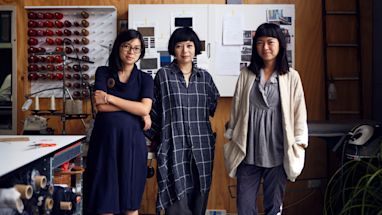A lush urban canopy is important for Sydney and provides benefits beyond visual pleasure. Find out what trees do for an urban environment and how you can ensure they keep growing.
The benefits of trees
Trees are important for improving our air quality through photosynthesis. They also play a crucial role in reducing the urban heat island effect. This happens when temperatures stay warmer longer due to a concentration of heat absorbent surfaces, such as roads, footpaths and buildings. This matters for people living in the inner city, as temperatures continue to rise.
Trees also filter toxins from the first flush of stormwater run-off after rainfall and keep the soil porous, allowing stormwater absorption rather than draining into the harbour. And most would agree that they would rather watch branches moving in the breeze outside their window than many a human-built structure.
In just 12 months, one mature tree can absorb 3,400 litres of stormwater, filter 27kg of pollutants from the air and provide a cooling effect equivalent to running 10 air conditioners continuously.
Trees don’t just improve our physical and sensory environment. We now know that trees also have positive effects on our mental health.
Neuroscientific research has shown that exposure to green nature reduces people’s stress and anxiety and boosts concentration, memory and creative thought.
Urban designers during Covid-19 have re-focused our attention on the importance of creating every day public green spaces in cities for exercise but also wellbeing.

Maintaining and protecting trees
In 2012, we put in place official strategies that aim to increase tree, shrub and grass canopy cover and biodiversity in the city. One of the plans is to boost the size of our green canopy by 50% over the next 15 years.
We’re working towards this by inspecting, maintaining and protecting trees so they can grow into old age. We’re also planting different species and varieties and keeping a register of significant trees. Check it out if you’re curious about a magnificent character on your street.
Our local area, which is 26 sq km, has more than 30,000 street trees and 14,000 park trees, as well as an estimated 60,000 trees on private land. We’ve planted 11,742 trees since 2005.

What you can do
Many of us are already proud plant parents, with different varieties adorning our homes.
Take this love of indoor plants and creepers outdoors:
- If you’re landscaping on your property, create a lush garden or even a small patch with native plants and a tree or two. Think of picnics, al-fresco dinners by candle light and reading books in the shade
- If you don’t have much space, set up a vertical garden or plant a small bush or tree in a pot.
- Talk to your strata about planting a tree on common property.
- Donate a tree to a city park.
- You don’t need your own property to get involved. Get in touch to find out how you can get involved in setting up a footpath garden in your street.
Learn more
Cities around the world are recognising the role of tree canopy in lowering temperatures.
In 2015, the World Economic Forum’s Global Agenda Council on the Future of Cities included increasing green canopy cover on its list of top 10 urban initiatives.
Check out how Sydney’s faring against other cities.
The researchers who created this used Google Street View to determine a rating that quantifies each city’s percentage of canopy coverage based on aerial images.
Published 9 July 2018, updated 31 July 2020



